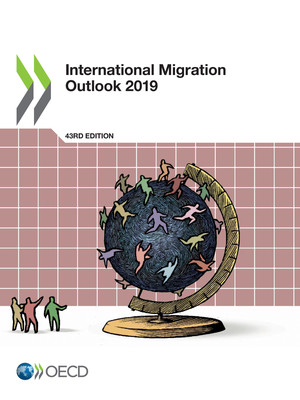copy the linklink copied!Mexico
1 million, 50% women
1% of the population
Evolution since 2007: +65%
Main countries of birth:
United States (73%), Guatemala (4%), Spain (2%)
In 2017, Mexico received 32 000 new immigrants on a long-term or permanent basis (including changes of status), -9.7% compared to 2016. This figure comprises 16.4% labour migrants, 50% family members (including accompanying family) and 9.7% humanitarian migrants.
Around 3 600 permits were issued to tertiary-level international students and 38 000 to temporary and seasonal labour migrants.
The United States, Venezuela and Honduras were the top three nationalities of newcomers in 2017. Among the top 15 countries of origin, Venezuela registered the strongest increase (800) and the United States the largest decrease (-1 400) in flows to Mexico compared to the previous year.
In 2018, the number of first asylum applicants increased by 29.5%, to reach around 30 000. The majority of applicants came from Honduras (13 600), Venezuela (6 300) and El Salvador (6 200). The largest increase since 2017 concerned nationals of Honduras (9 400) and the largest decrease nationals of Cuba (-600). Of the 12 300 decisions taken in 2018, 48% were positive.
Emigration of Mexicans to OECD countries decreased by 1.2% to 191 000. Nine in ten (89.7%) migrated to the United States, 2.7% to Spain and 2.6% to Germany.
In October and November 2018, a large group of migrants (marching in “caravans”) entered Mexico from Honduras and Guatemala, heading for the United States. In early 2019, migrants of different nationalities also arrived in groups with the same purpose. The Mexican government put in place a wide range of measures focused on providing humanitarian assistance and protection of migrants and their families.
Central Americans who requested international protection from the Mexican government to stay and live in the country, were supported with services including food and medical attention provided by Mexican authorities in coordination with International Organisations and civil society. More than 3 000 applications for refugee status were processed in the two weeks following the arrival of the “caravan” in October 2018.
On 26 October 2018, the Mexican government announced the Estás en tu casa (You are at home) Plan, which allowed foreign migrants situated in the states of Chiapas or Oaxaca to access the Temporary Employment Program (PET). The programme was also available for nationals residing in the two States and consisted of carrying out repairs, maintenance and cleaning of social infrastructure, such as roads, buildings and public spaces. In order to benefit from the programme, migrants must have already applied for admission or recognition of their refugee status with personnel of the National Institute of Migration or at the Mexican Refugee Commission (COMAR) offices and have obtained a temporary Unique Population Registry Code (CURP) for foreigners.
Several weeks later, the heads of the Secretariat of Governance and the Secretariat of Labour and Social Welfare, in coordination with members of the business community, initiated a plan to facilitate the transition towards a regular status of Central Americans. After regularising their immigration status, almost 700 migrants had already found a formal job in manufacturing and service sectors in Baja California and Mexico City within two weeks (INM, 2018).
Between 27 November 2018 and 12 February 2019, the National Institute of Migration (INM) made “Visitor Cards for Humanitarian Reasons” available to Central Americans. 13 270 of these cards were delivered at the Guatemala-Mexico border. With these cards, migrants may travel through Mexico for one year and obtain a temporary Unique Population Registry Code (CURP) for foreigners, which facilitates access to employment, health and education. In January 2019, Mexico activated the Migrant Caravan Care Plan, which was adopted by multiple Mexican federal agencies and ensured immediate medical attention as well as supply of food, water and information at the moment of entry to the country.
In 2018, the United States Department of Homeland Security, started unilaterally sending back non-Mexican asylum seekers (who had entered its territory from Mexico) to Mexico to await the processing of their application. During this time, Mexican governmental authorities adopted measures to guarantee a safe stay for returnees awaiting the final decision on their asylum application.
For further information:
Metadata, Legal and Rights
https://doi.org/10.1787/c3e35eec-en
© OECD 2019
The use of this work, whether digital or print, is governed by the Terms and Conditions to be found at http://www.oecd.org/termsandconditions.



